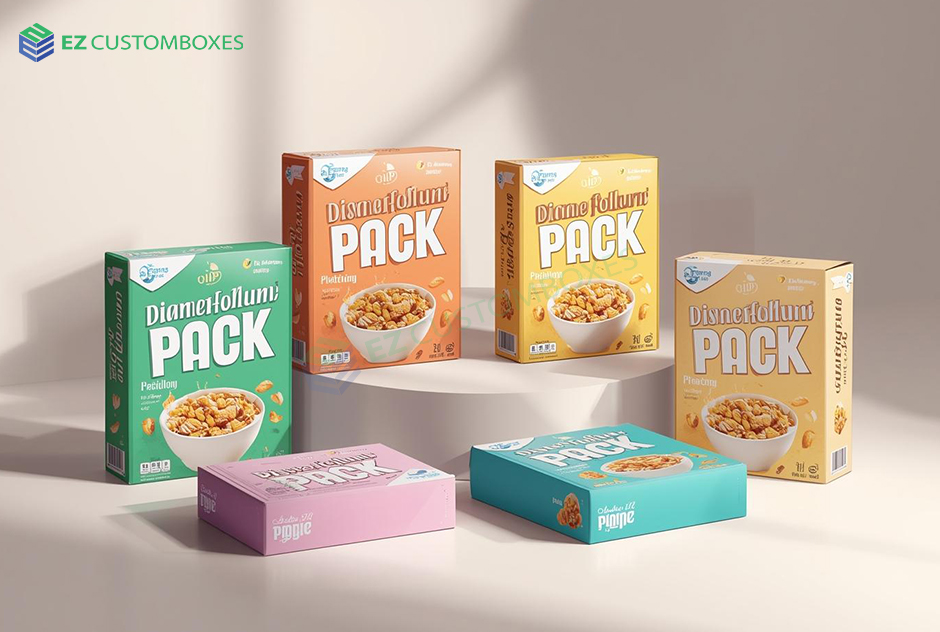Cereal has been around for many years now. The product is a popular one eaten by many people which has resulted in many brands manufacturing it and introducing new and exciting flavors which attract consumers to the product. Cereal boxes are the packaging of the product is an important part of it and needs to be designed carefully to protect and promote the product.
The packaging was first used to protect the cereal from stuff that could negatively impact it. Nowadays the boxes also are made to promote the cereal to the consumer base such as kids.
The following is a historical perspective of cereal packaging and childhood branding:
Early packaging
It was at the end of the 19th and beginning of the 20th century that breakfast cereal was being seen as a healthy food choice. The packaging at this time was practical. It was not fancy or designed to attract the consumer base to it. It was plain. However this changed when the competition increased.
Originally the product was sold to consumers in unbranded and simple cardboard boxes. The main aim of the that have the packaging was to ensure the product remained fresh and protected.
It was the Kellogg brothers who were one of the first ones to consider branded packaging. This was around 1906. Different cereal brands started looking for packaging ideas that would stand out to their consumer base.
Popularity of mascots
After World War II there was an economic boom along with the popularity of television. This allowed cereal brands to promote the product to kids. Cereal was now being seen as a fun and sweet product that kids wanted.
Mascots on custom cereal boxes became popular. Iconic mascots such as Snap, Tony the Tiger, etc. became popular and were included on the box to attract kids to it. These characters were also seen in TV advertisements. This helped a brand develop its brand identity which helped kids recognize the product when it was in a store.
Brands even considered placing the product for kids on a lower shelf where kids could easily recognize it. Cereal mascots were being made so that they could make eye contact with kids so that children were excited to want to buy the product.
The packaging even became interactive and included fun games and puzzles or cut-outs on the back of the packaging. Children were excited to buy the product so that they could continue the puzzle or game.
Modern packaging
The packaging of cereal changed to adhere to trends and consumer preferences. Nowadays there are many packaging materials that can be chosen to make the box with. A brand can select food-grade options which let consumers know the product is protected and safe to eat. Packaging such as this can increase the shelf life of the product as well. Consumers are even demanding the brand choose “safe” packaging inks to design the box with.
Previously consumers were excited to get in-box prizes in the box. These are not very popular nowadays. The promotions are now digital rewards or exciting online games. A custom cereal box that is interactive is able to stand out and be noticed by people. QR codes can be added on the box which lead people to more information about the brand and the products it is selling. Consumers can be led to exciting games and competitions.
The packaging still has bright colors along with familiar mascots that stand out to kids. Some brands promote the product by re-releasing the classic packaging design so that adults can be drawn to the box and remember their childhood.
Due to many customers being conscious about what their kids eat, brands need to promote healthy cereal options. Transparent packaging that does this can stand out nowadays encouraging parents to buy the cereal for their kids.
Sustainable packaging
Another major trend in the packaging of the product includes designing boxes that will not pollute the environment with more waste. The packaging is made with eco-friendly materials like recycled cardboard or Kraft paper that will not spoil the product and environment and is designed with the right sustainable inks.
Consumers are told how to throw away the box ensuring it does not remain in the environment and further pollute it with more waste. The box can be designed in an appealing way yet still remain sustainable.
A cereal box has always been an important part of the product. Previously it was used only to protect it and ensure it remains fresh. But as the competition increased and consumer preferences changed, brands had to adapt to this. The cereal packaging for kids is now being designed to promote the product to kids and adults convincing them to buy it. There is more competition in the market nowadays and brands must stand out in front of this to get their product noticed. The packaging is designed according to this and what will make the brand get known.

